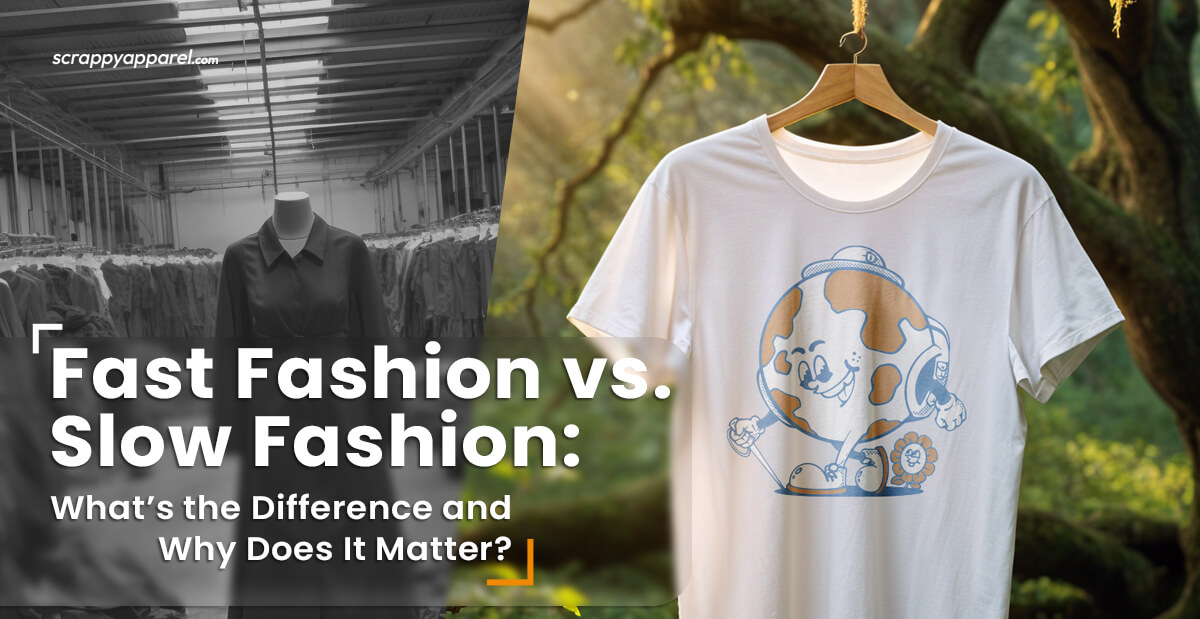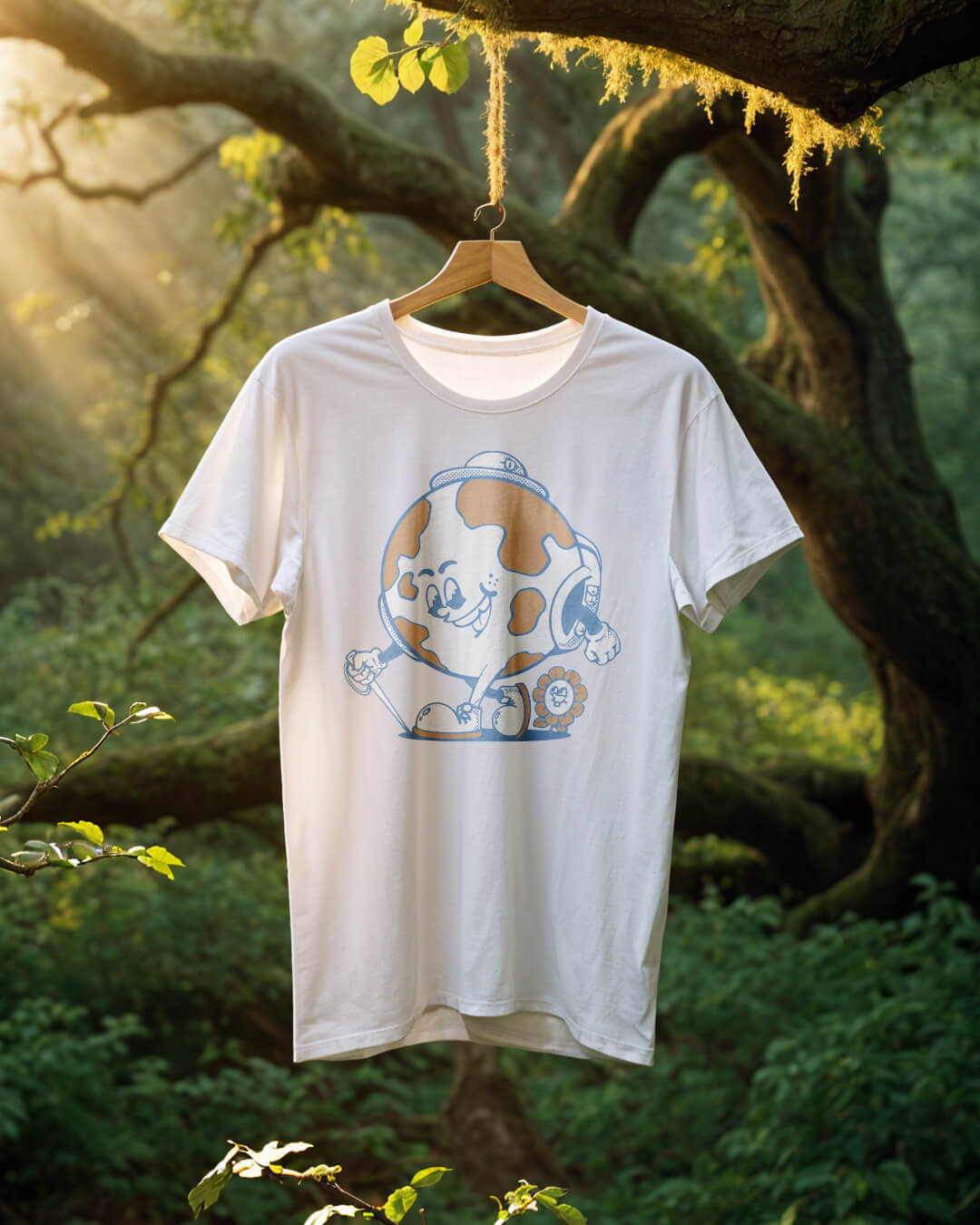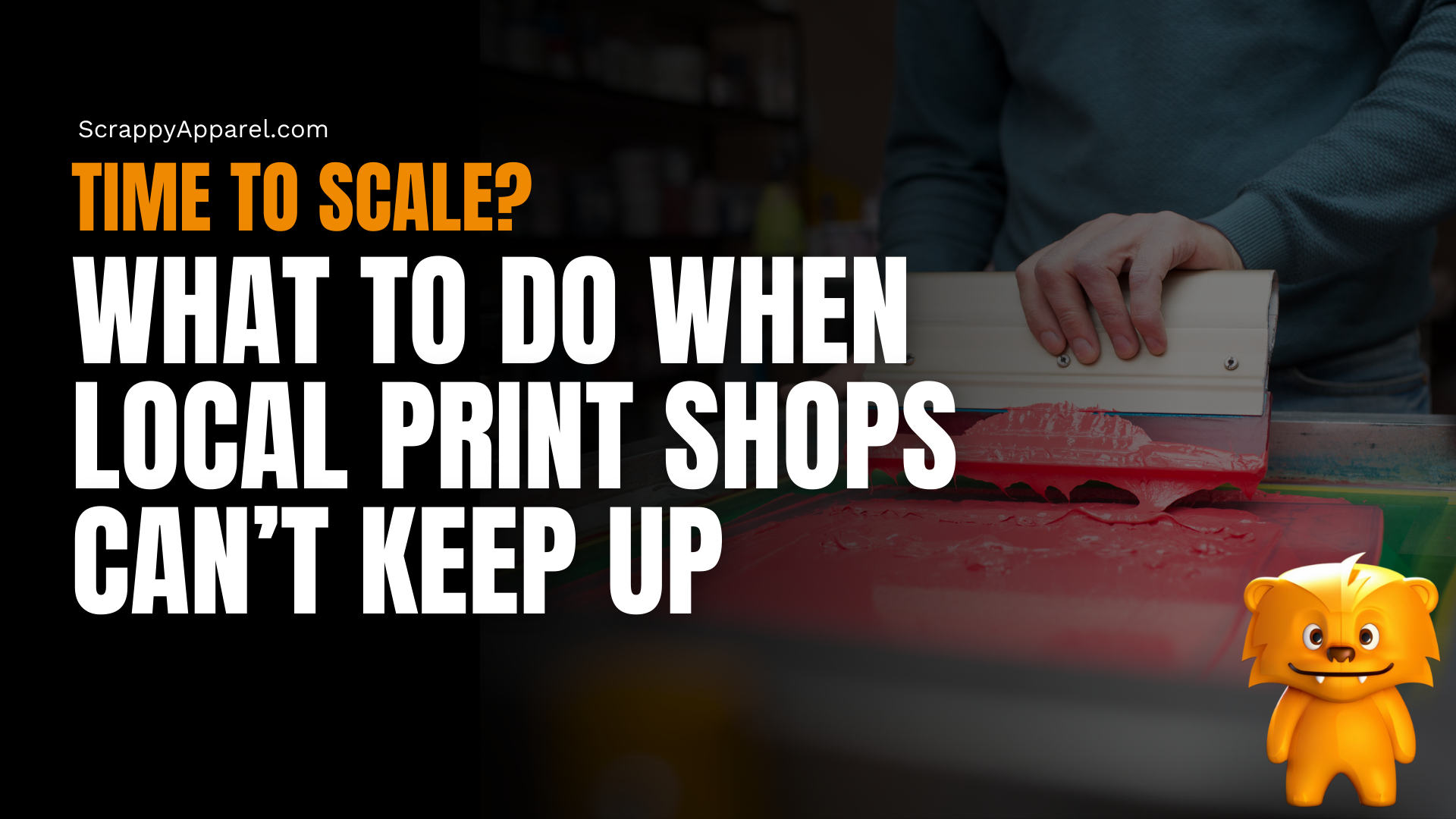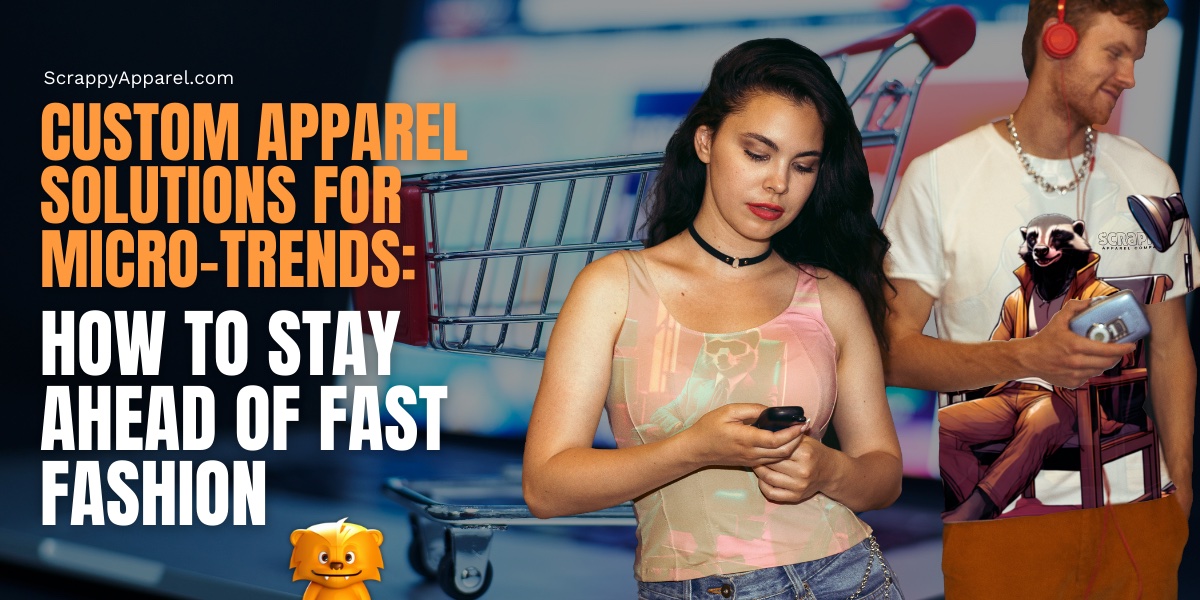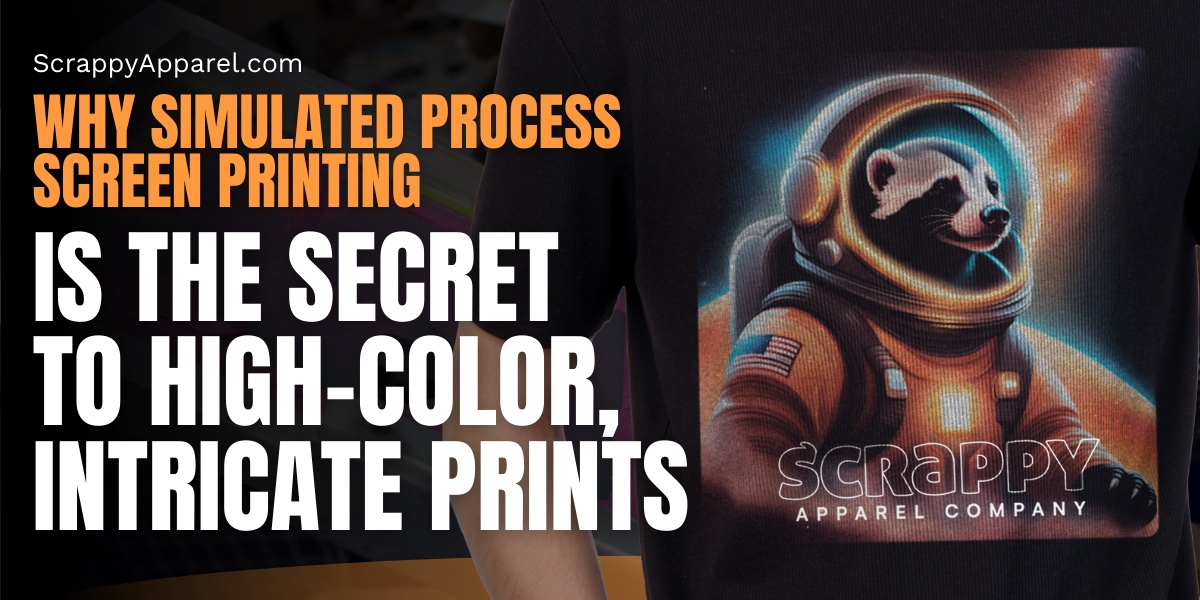Fast Fashion vs. Slow Fashion: What’s the Difference and Why Does It Matter?
In 2024, the U.S. faces an increasing demand for fast fashion brands. At the same time, the popularity of slow fashion also keeps growing.
With both trends expanding simultaneously, you need to understand which business model best fits your company: fast fashion or slow fashion. This distinction is crucial for the future of your business.
The changing customer demands impact the entire production process for apparel brands. Eventually, you’ll need to adapt to new trends and market requirements. Quite a challenge, right?
But you are not alone! We’re here to help you understand the differences between fast and slow fashion—and how to thrive with both strategies.
Scrappy Apparel is Ready to Help You Choose the Best Manufacturing Strategy for Your Brand

@kirnpit There’s no going back #slowfashionmovement #prelovedfashion #browngirlmagic #styleovertrends @thredUP @Goodwill Southern California ♬ MILLION DOLLAR BABY – Tommy Richman
What is Fast Fashion?
Fast fashion is a business strategy focused on swiftly producing and cycling through inexpensive, trendy apparel.
Think Forever 21, H&M, Boohoo, Stradivarius, and Fashion Nova—these are some mainstream fast fashion giants.
But just following fashion trends and offering lower market prices isn’t enough to classify a brand as fast fashion. The entire manufacturing and marketing process determines if a brand is fast fashion.
Trend Replication and Fast Production
Fast fashion brands replicate tons of products and styles that have recently been showcased in fashion shows or are trending on social media—and they do this on a large scale.
In 2021, Forbes showed that some fast fashion brands can produce up to 5,000 styles per week. In other words, fast fashion gives the consumer what they’ve seen and now desire. It’s a way to instantly satisfy consumers’ needs.
High Turnover
Since these garments fit into just one style and prioritize quantity, they have a high turnover rate. Many consumers are aware of their lower-quality fabrics and consider them disposable after a short time. People wear the garments, get tired of them, and then pass the clothing items on to someone else.
Affordable Style and Purchase Incentive
Since the focus here is on quantity over quality, you already know what that means: the garments are lower in cost. The affordable price makes purchases more frequent.
What is Slow Fashion?
Slow fashion is almost the opposite of its fast counterpart.
The focus here is on producing and making garments in fewer quantities. Slow fashion encourages consumers to make more mindful purchases with access to more durable and higher-quality fabrics.
Some examples of slow fashion brands include Eileen Fisher, Patagonia, People Tree, and Everlane. But there’s more to slow fashion than just selling quality garments.
Ethical Manufacturing
Ethical manufacturing calls for sustainable and high-quality materials, fair working conditions, worker safety, and greater awareness of consumption.
Each garment comes with a seal of guarantee for a clear consumption conscience.
High-Quality Materials
The fabrics and other materials chosen have great quality and durability, and they prioritize craftsmanship. The goal of slow fashion is to provide consumers with garments that take years to show signs of wear.
Timeless Designs
Did you know? The average consumer only wears 20% of the clothing in their closet. This startling stat can easily encourage fashion enthusiasts to be more mindful of their purchases.
Slow fashion garments often follow a timeless design that never goes out of style. They can be used to create new outfit combinations with their timelessness and durability.
Mindful Consumption
Due to their higher prices, high-quality craftsmanship, and versatility, purchases of new items are made for longer periods. These garments are made to last longer and transcend trend seasons.
What Are the Broader Implications for Apparel Brands?
Your choice between slow and fast fashion is going to have huge implications for your brand’s image, production process, audience, and much more.
Production Speed
Fast fashion churns out new pieces of clothing every few weeks, so it’s necessary to prioritize speed and trend replication. Slow fashion focuses on smaller production processes, emphasizing quality and longevity.
Brand Philosophy
Choosing fast fashion means quantity over quality. You’ll be seen as a brand with garments that fall apart quickly and rarely hold resale value.
While choosing slow fashion, your business will now be seen as an ethical brand with high-quality (and expensive) garments.
Supply Chain
If you choose fast fashion and don’t have reliable manufacturing partners, it will be difficult to trace materials and maintain ethical practices.
With the less-demanding manufacturing and supply chain processes in slow fashion, it’s easier to have transparency.
Target Audience
You’ll need to choose between serving fast or slow fashion customers. While it’s possible to sell to both at the same time, your marketing efforts should focus on just one.
To make the best choice, you can monitor which fashion trends your target audience has been following lately.
Scrappy Apparel Provides the Best of Both Worlds
Both slow fashion and fast fashion have their strengths and weaknesses, but it’s totally possible to have high-quality materials, produce a high quantity of garments, and offer affordable prices—all at the same time!
Here at Scrappy Apparel, we believe you don’t need to choose between quantity and quality. With us, you’ll have a complete solution in one place!
Mass Production of High-Quality Garments
Scrappy Apparel excels in mass-producing high-quality garments with remarkable speed.
We developed advanced manufacturing techniques and streamlined our production processes to the max. It doesn’t matter if you need thousands of pieces fast—we ensure that every piece meets our stringent quality standards.
Scrappy Apparel combines speed with excellence, making us a leader in high-volume apparel solutions.
You’ll never outgrow us, so it’s time to partner with us…
Full-Scale 3PL MGMT Program
Our 3PL MGMT program provides access to 4PL and 5PL-level support. You can expect us to provide you with everything you need to overcome logistics challenges:
- End-to-end supply chain management
- Efficient business scaling
- Strategic oversight
- Comprehensive apparel manufacturing services
- Integrated fulfillment solutions
- Streamlined operations
- Complete management of multiple 3PL warehouses
…and much more!
Complete Customization
Our exceptional manufacturing services encompass high-quality screen printing, private labeling, and a variety of specialized printing techniques. These capabilities allow your brand to offer premium products that distinguish themselves in a competitive market.
Our advanced manufacturing services facilitate extensive customization options for your brand. We assure faithful colors and printing to reflect your brand’s identity.
Transparency & Efficiency
Partner with us to enter a realm where efficiency and convenience converge.
We customize our fulfillment processes to meet the requirements of each final destination, offer personalized packing slips and shipping labels, and more.
With our state-of-the-art system, you are constantly updated on stock levels, ensuring real-time synchronization of your products and inventory no matter how big your operations are.
Our fulfillment service integrates with your online store and allows you to concentrate on marketing and sales.
Once an order is placed, we take care of everything. You are free to focus on attracting customers.
Become Our Next Scrappy Success Story!

